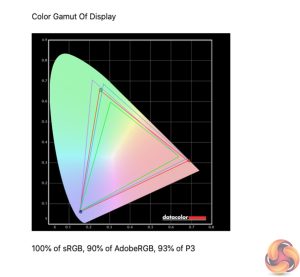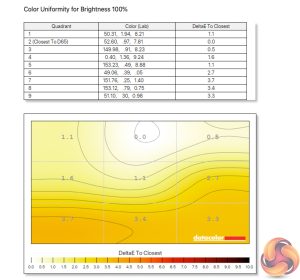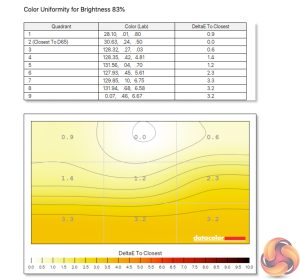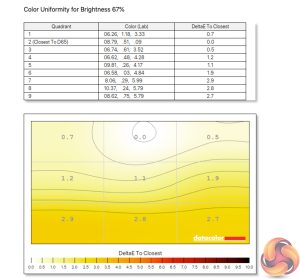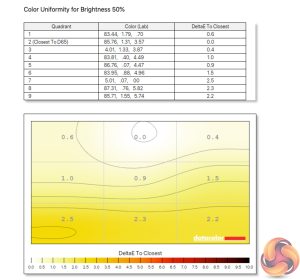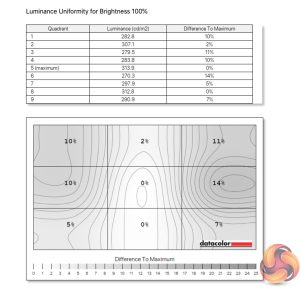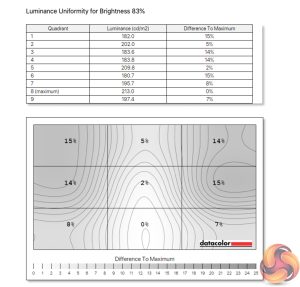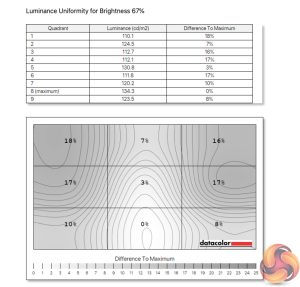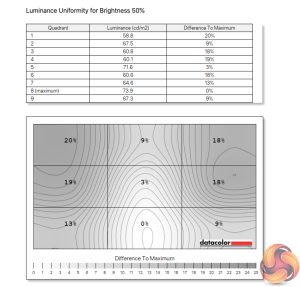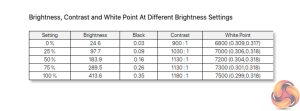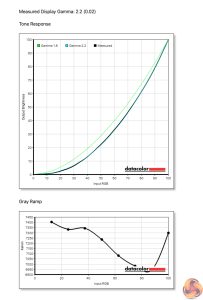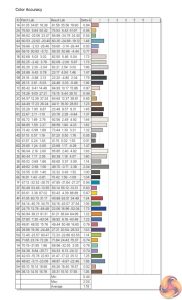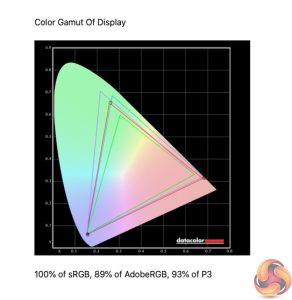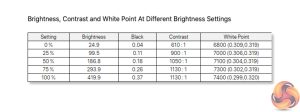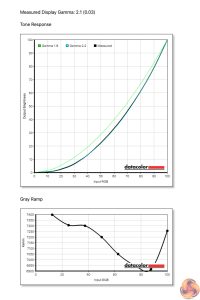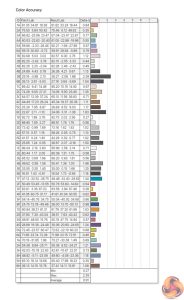Our main test involves using a DataColor SpyderX Colorimeter to assess a display’s image quality. The device sits on top of the screen while the software generates colour tones and patterns, which it compares against predetermined values to work out how accurate the screen is.
The results show –
- A monitor’s maximum brightness in candelas or cd/m2 at various levels set in the OSD.
- A monitor’s contrast ratio at various brightness levels in the OSD.
- The brightness deviation across the panel.
- The black and white points.
- The colour accuracy, expressed as a Delta E ratio, with a result under 3 being fine for normal use, and under 2 being great for colour-accurate design work.
- The exact gamma levels, with a comparison against preset settings in the OSD.
We first run this test with the display in its default, out-of-the-box state, with all settings on default. We then calibrate the screen using the Spyder software and run the test again.
Pre-calibration
Starting with the Gamut testing, we measured 100% sRGB, 90% AdobeRGB and 93% DCI-P3 coverage. This is just shy of the quoted 95% DCI-P3 coverage, but it's still a strong start.
Colour uniformity is another solid area for the GM32-FQ, with only small aberrance along the bottom of the screen, though this gets better at lower brightness levels.
Luminance uniformity isn't quite so impressive however, with up to 20% deviation recorded when at 50% brightness, though this improves considerably when using the display at higher brightness levels.
Speaking of brightness, Cooler Master claims 400 nits for the GM32-FQ, which is spot on as we measured just over 413 nits, so that should be more than bright enough for almost all users. Impressively, we also recorded a minimum brightness of less than 25 nits, one of the lowest figures I have seen.
Contrast is also very close to the claimed 1200:1 ratio, as we saw a peak of 1180:1, though the panel does run a touch cool at 7500K.
There's only one Gamma setting, but it delivers a result of 2.2, just where we'd want it.
Colour accuracy is also very strong, with an average DeltaE of 1.19 out of the box, and a maximum of 2.04 which is highly impressive, if not the best we have ever seen.
Post-calibration
After calibration, not a whole lot changes aside from a marginal increase to colour accuracy, with a new average DeltaE of 0.91, which is a credit to Cooler Master's factory calibration process.
 KitGuru KitGuru.net – Tech News | Hardware News | Hardware Reviews | IOS | Mobile | Gaming | Graphics Cards
KitGuru KitGuru.net – Tech News | Hardware News | Hardware Reviews | IOS | Mobile | Gaming | Graphics Cards



